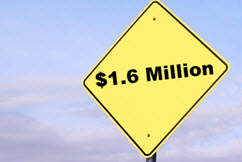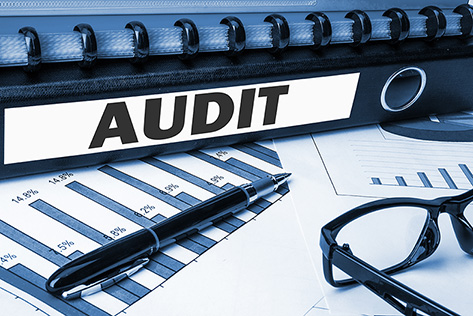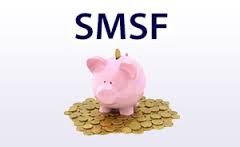|
|
||||||||||||||||||||||||||||||||||||||||||||||||||||||||||||||||||||||
| click here to unsubscribe from the mailing list |
Phones are not working due to Optus outage, Please click on Live chat Button.
- $124 + ASIC FEECompany Registration
- Fr $53 + ASIC FEEBusiness Name Registration
- $148.5 (Incl. GST)SMSF
Trust Deed - Fr $165 (Incl. GST)SMSF
Tools- Reduce cost of Documents
$55.00 - Pay By Vouchers - Information
- Commence Account Based Pension
($248.5 incl. GST) - Deed of Confirmation
($248.5 incl. GST) - Add Member to SMSF
($248.5 incl. GST) - Delete Member from SMSF
($248.5 incl. GST) - Change Individual Trustee to Corporate
($248.5 incl. GST) - Change Corporate Trustee to Individuals
($248.5 incl. GST) - Change Corporate Trustee
($248.5 incl. GST) - Declaration of Trust
($220 incl. GST) - SMSF Loan Agreement
($220 incl. GST) - Binding Death Nomination
($75 incl. GST)
- Reduce cost of Documents
- $165 (Incl. GST)SMSF
Borrowing - $97.50 (Incl. GST)Actuarial
Certificate - $495 (Incl. GST)Quantity
Surveyor Rep - Fr $125 (Incl. GST)Trusts
- Reduce cost of Documents
$55.00 - Pay By Vouchers - Information
- Discretionary Trust Deed
($148.5 incl. GST)
($250 incl. GST with Company Trustee) - How Discretionary Trusts work
- Unit Trust Deed
($148.5 incl. GST)
($250 incl. GST with Company Trustee) - How Unit Trusts work
- Fixed Unit Trust Deed
($275 incl. GST)
($372.5 incl. GST with Company Trustee) - How Fixed Unit Trusts work
- Why Use Us
- Document Printing
- Reduce cost of Documents
- FreeJobs
- Our
Fees
-
Register a Company or Business Name 24/7,
we have a direct link with ASICHelping you to set up the right business structure online
Fast, Simple and Easy application like never before
Register Now -
Full technical support for Family or Discretionary Trust,
Unit Trust and Fixed Unit TrustFully online, legally compliant trust deed instantly delivered to your inbox
One stop solution for your trust structure needs
Register Now -
Simplify SMSF management & updates
with dedicated SMSF SpecialistCreate the most technically robust
Self Managed Super Fund trust deed, online in less than 20 minutesMake changes easily for smoother running of your SMSF by using our SMSF tools
Register Now -
Get Trusted & Accurate SMSF Borrowing documents
and Actuarial Certificates onlineGet your borrowing documents ready with SMSF Experts
specialised in Limited Recourse BorrowingOrder instant Actuarial certificates online to meet your actuarial certificate requirements
Register Now -
Order a Quantity Surveyor Report online
for your investment property anywhere in AustraliaPhysical visit. No online spreadsheet
Claim maximum for your Investment Property
Register Now



 Any amounts in pension phase on 30th June 2017 greater than BTC amount can be either withdrawn from the superannuation system or moved to accumulation account of the retiree, where income is taxed at concessional tax rate of 15%.
Any amounts in pension phase on 30th June 2017 greater than BTC amount can be either withdrawn from the superannuation system or moved to accumulation account of the retiree, where income is taxed at concessional tax rate of 15%. Some of the calculations available in the media is closing into a figure of around $600,000 in superannuation savings as the ideal figure which a couple should target to get the best return from government age pension in retirement years.
Some of the calculations available in the media is closing into a figure of around $600,000 in superannuation savings as the ideal figure which a couple should target to get the best return from government age pension in retirement years.  There are many reasons given by planners and estate lawyers when recommending retirees with over $1.6M to invest outside super rather than investing inside super. Some of these arguments are relating to payment of death benefit to adult children.
There are many reasons given by planners and estate lawyers when recommending retirees with over $1.6M to invest outside super rather than investing inside super. Some of these arguments are relating to payment of death benefit to adult children. Firstly, it is to be remembered that the balance transfer cap amount is tested against the value of assets of the fund when we commence a new pension for the first time or on 1st July 2017 for an existing pension.
Firstly, it is to be remembered that the balance transfer cap amount is tested against the value of assets of the fund when we commence a new pension for the first time or on 1st July 2017 for an existing pension. In our example above, the fund has $2.4 Million of assets and for sake of simplicity, let's assume the fund has two assets of equal values, $1.2Million each and one asset returns 10% and the other asset returns 2% making the average return of the fund 6%.
In our example above, the fund has $2.4 Million of assets and for sake of simplicity, let's assume the fund has two assets of equal values, $1.2Million each and one asset returns 10% and the other asset returns 2% making the average return of the fund 6%. If a fund has one member with pension account and an accumulation account (super balance more than BTC amount) or if there are accumulating members in the fund along with pension members, all assets of the fund, must be un-segregated and an actuary employed to calculate exempt pension income of the fund and issue the fund with an actuarial certificate determining the exempt pension income of the fund, before lodgement of the income tax return of the fund.
If a fund has one member with pension account and an accumulation account (super balance more than BTC amount) or if there are accumulating members in the fund along with pension members, all assets of the fund, must be un-segregated and an actuary employed to calculate exempt pension income of the fund and issue the fund with an actuarial certificate determining the exempt pension income of the fund, before lodgement of the income tax return of the fund. Let's assume that our pension member is 62 years old and needs to withdraw only 4% of the pension balance as on 1st July, any excess required for life style purposes, can be withdrawn as a lump sum from the accumulation account.
Let's assume that our pension member is 62 years old and needs to withdraw only 4% of the pension balance as on 1st July, any excess required for life style purposes, can be withdrawn as a lump sum from the accumulation account. In our calculations exempt current pension percentage in the 6th year was 69.4% as compared to 60.54% if these two strategies were not implemented or in other words further 9% of income can be sheltered from tax if these two strategies are implemented.
In our calculations exempt current pension percentage in the 6th year was 69.4% as compared to 60.54% if these two strategies were not implemented or in other words further 9% of income can be sheltered from tax if these two strategies are implemented. A member of an SMSF who is pension phase on 30th June 2017, may or may not have an accumulation account in that SMSF.
A member of an SMSF who is pension phase on 30th June 2017, may or may not have an accumulation account in that SMSF. 


 Properties have varied investment returns, generally residential properties returns are lower as compared to commercial properties.
Properties have varied investment returns, generally residential properties returns are lower as compared to commercial properties.  If a member has more than one child, for estate planning purposes it can be beneficial to have one SMSF for each child, where the assets of the fund can pass on to the next generation without paying any capital gain tax.
If a member has more than one child, for estate planning purposes it can be beneficial to have one SMSF for each child, where the assets of the fund can pass on to the next generation without paying any capital gain tax.  If you or your clients have only one fund and want to set up another fund (or funds) for estate planning purposes before 30th June 2017 and divide the assets of the current fund by moving some properties to the new fund, there is a further restriction imposed by exemptions contained in Section 66 of SIS Act.
If you or your clients have only one fund and want to set up another fund (or funds) for estate planning purposes before 30th June 2017 and divide the assets of the current fund by moving some properties to the new fund, there is a further restriction imposed by exemptions contained in Section 66 of SIS Act..png)
.jpg)




.png)

